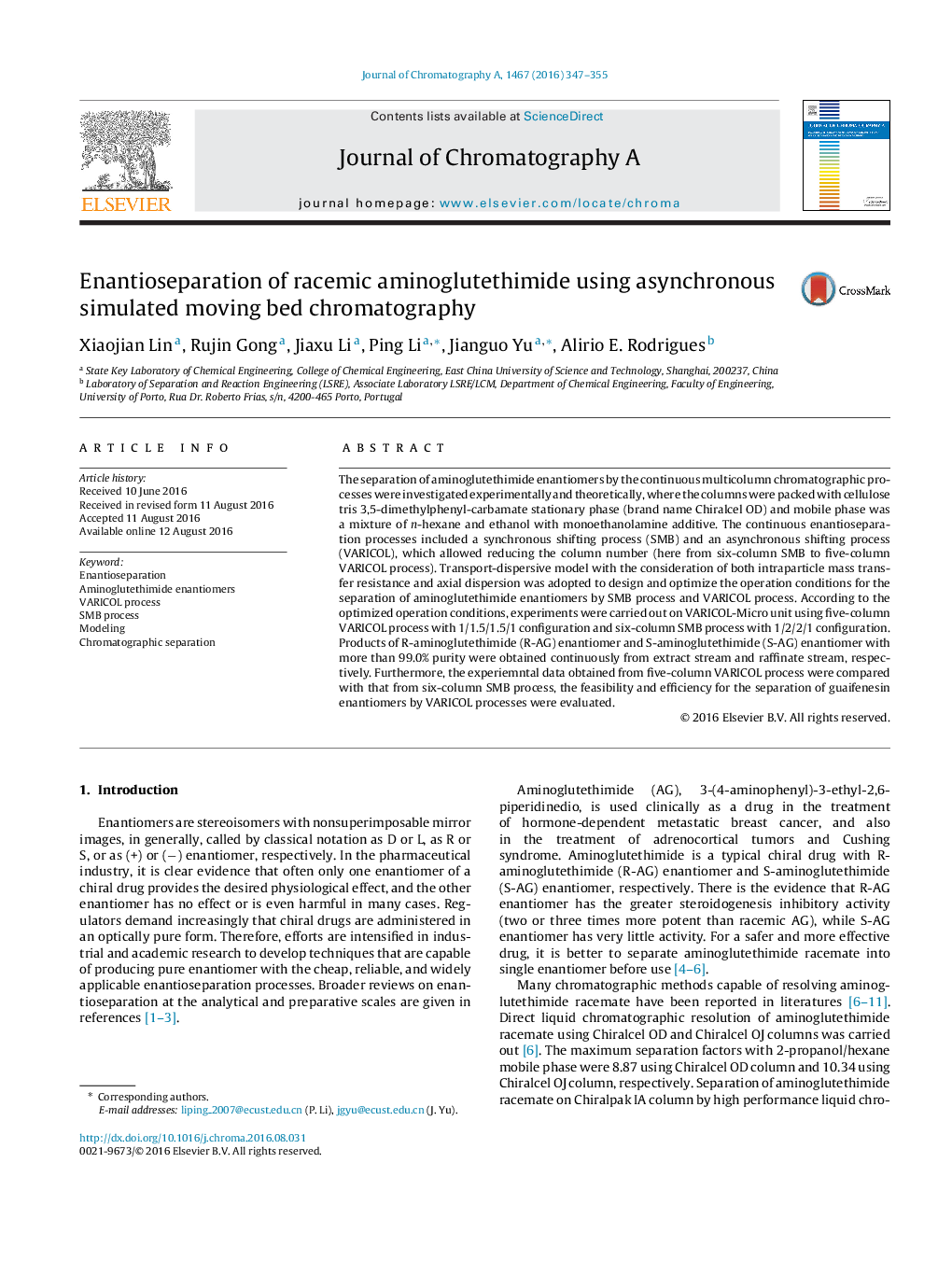| Article ID | Journal | Published Year | Pages | File Type |
|---|---|---|---|---|
| 5135640 | Journal of Chromatography A | 2016 | 9 Pages |
â¢Separation of aminoglutethimide racemate by VARICOL and SMB processes is compared.â¢VARICOL process with various column configurations is assessed.â¢Separation conditions of VARICOL process are designed by transport-dispersive model.
The separation of aminoglutethimide enantiomers by the continuous multicolumn chromatographic processes were investigated experimentally and theoretically, where the columns were packed with cellulose tris 3,5-dimethylphenyl-carbamate stationary phase (brand name Chiralcel OD) and mobile phase was a mixture of n-hexane and ethanol with monoethanolamine additive. The continuous enantioseparation processes included a synchronous shifting process (SMB) and an asynchronous shifting process (VARICOL), which allowed reducing the column number (here from six-column SMB to five-column VARICOL process). Transport-dispersive model with the consideration of both intraparticle mass transfer resistance and axial dispersion was adopted to design and optimize the operation conditions for the separation of aminoglutethimide enantiomers by SMB process and VARICOL process. According to the optimized operation conditions, experiments were carried out on VARICOL-Micro unit using five-column VARICOL process with 1/1.5/1.5/1 configuration and six-column SMB process with 1/2/2/1 configuration. Products of R-aminoglutethimide (R-AG) enantiomer and S-aminoglutethimide (S-AG) enantiomer with more than 99.0% purity were obtained continuously from extract stream and raffinate stream, respectively. Furthermore, the experiemntal data obtained from five-column VARICOL process were compared with that from six-column SMB process, the feasibility and efficiency for the separation of guaifenesin enantiomers by VARICOL processes were evaluated.
